How do we camp for free? What resources do we use, and how do we know that they are free? Here are some ideas based on the resources we’ve used so far while traveling.
Like most people on a long trip like ours, we are traveling on a very limited budget. One of the questions we get asked the most is “How can you afford to travel for this long?”. Well, a main principle behind our travels is to spend as little money as possible. And maybe the biggest factor in saving money on the road is this: try to camp for free.
Why is this so important to us? Well, the way I see it,
I have my bed with me. Money is supposed to be traded for resources, that’s what people use money for all over the world. A place to sleep is one of those resources, one that I happen to possess at all times as long as we are with Big Emma (which is about 99% of the time). Why should I, therefore, trade one of my precious resources (
money) for a different resource that I already have? Thus it is one of our goals to try to camp for free as much as possible.
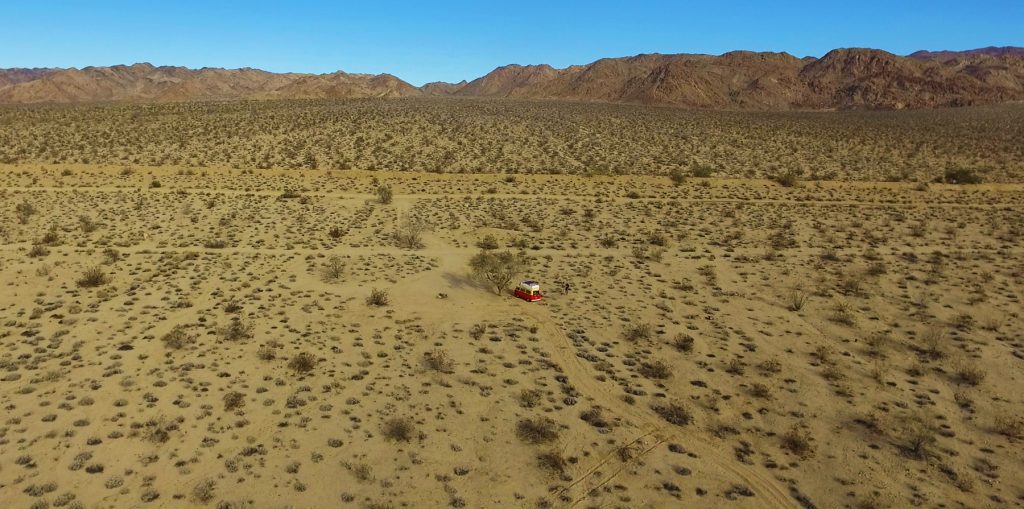
Camping south of Joshua Tree National Park in California. Prime BLM Land, where you can camp for free for up to 14 days at a time. No facilities provided – bring your shovel.
Sometimes, you do have to pay for camping
Most of these times were because we were with other people. If you’re new to the crew, it is easier to get accustomed to life in the Bus when there is a real toilet around, and it is a nice touch for
guests when we don’t have to spend the hours after they’ve arrived – usually from very far away on a plane – searching for a camp spot. A fire pit also says “
welcome to vanlife” like nothing else. We had also paid for camping to
spend time with friends over New Years and once or twice because there was nothing else around and Sven and I needed a bit of extra comfort to stop bitching at each other.

iOverlander camp spot in the back of Stoners Surf Camp in San Blas, Mexico. Although this was not free, it represents a typical paid iOverlander beach camp spot in Mexico. The fee was $50 pesos (about USD $2.50) per person per night.
Every country is different
Here in Mexico, things have been a little different, mostly because of
safety concerns. Don’t get me wrong, we have so far experienced a very safe and welcoming Mexico. But it is harder to judge our surroundings here and we like to play it on the safe side. Strangely enough, in the States we were usually concerned about being woken up by the cops and told to move (which, by the way, never actually happened); in Mexico, on the other hand, cops do not worry us. Rather, it is curious people who might think we are easy targets.
At first, we weren’t quite sure how safe it was to camp by ourselves on
Baja California’s remote, lonely beaches. Now on the mainland, it is just harder to find a place where we don’t think anybody will notice us or care that we are camping there. Although we still take free camp spots whenever possible, we like to avoid sleeping in shitty spots like gas stations or parking lots. We prefer to pay the small fee (usually between $5 and $10 USD) to sleep in a spot where we won’t be bothered.
But there are many options to camp for free
Our knowledge so far pertains only to the United States, Canada, and Mexico. However we have gathered quite a bit of information and resources concerning free camping and boondocking for these locations.
National Forests / BLM Land (USA)
You are usually completely alone, without a sign of other people in your own
private corner of the wilderness. Often, it also means you are without phone reception. Sometimes we drive along Forest Service Roads and look for pullouts along the way, other times, National Forests or BLM Land are outfitted with primitive campgrounds (aka pit toilets and the occasional fire ring). National Forests simply rock.
Let’s hope there are still plenty of them left to camp in by the time we return to the US after we get to Argentina.
iOverlander (everywhere) and freecampsites.net (mostly USA)
These two websites are the most essential for free camping.
iOverlander is available both as a website and as an app that can be downloaded to your phone (and often works offline), while
freecampsites.net is just a website (that is sadly very annoying to use via mobile). Both show locations of places to camp (paid and free). They are community-based sites, which means that locations are entered by users who have personally been there and have left a review and/or description of the location. iOverlander has the added benefit of showing the locations of other useful traveler resources, such as water, restaurants, propane, and police/passport checkpoints.
While freecampsites.net has been mostly useful for us in the States (and not that useful anywhere else), iOverlander is just the opposite. It has few to no entries in some parts of the US, and many, many useful locations in the rest of the Americas, although this has been changing as iOverlander has grown in popularity since we’ve hit the road.
Friends are golden (anywhere you have friends – or can make them!)
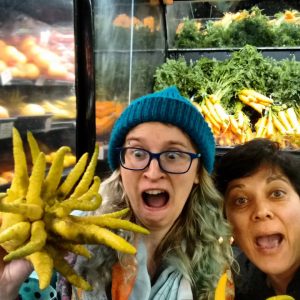
Staying with our friend Shameem (also Regular Emma’s third- and fourth-grade teacher) in Portland, Oregon, was one of the places we felt the most at home as guests on our trip.
Especially in the States, where we had a pretty solid network of friends and acquaintances, this was our favorite option for free “camping”. Most commonly we visited freinds we knew lived along our route, and other times people who knew us from the Internet invited us to stop by. A few times, we simply met people randomly who invited us into their homes or let us park in their driveway.
In fact, our third night on the road was one of these times. A woman named Carmen ran out of her house in South Dakota when she noticed we were searching for a place to camp. We not only enjoyed evening beers and morning breakfast, she also gave us our first on-the-road shower and invited us to camp in her driveway. It’s people like her that make traveling amazing, over and over again.
Couchsurfing (anywhere with couchsurfers – usually cities)
When we don’t have any friends around (as has usually been the case since we got to Mexico), we often rely on the social media platform
Couchsurfing. Couchsurfing is amazing, and I would encourage anyone who has a couch and likes people to participate in it. The platform allows you to search for people in the location you are headed who have a “couch” (aka bed, aka floor, aka whatever space they have to offer – sometimes driveways in our case) and stay with them for free. There is
no money involved, one of the basic principles of Couchsurfing. You can check out people’s profiles and their references on the site, so you can be pretty sure they’re not a creep.
We have participated in Couchsurfing for years, both as travelers and as hosts. We have never – never – had a negative couchsurfing experience. We have even offered up the top bunk of Big Emma for couchsurfers. However, due to moveability/scheduling issues, we have only had three couchsurfers in our Bus – and one of them slept with us in a parking lot.
Some of the most amazing travelers we have met have been through couchsurfing. If you don’t have one, go make yourself an account, and contribute to this wonderful traveler community.
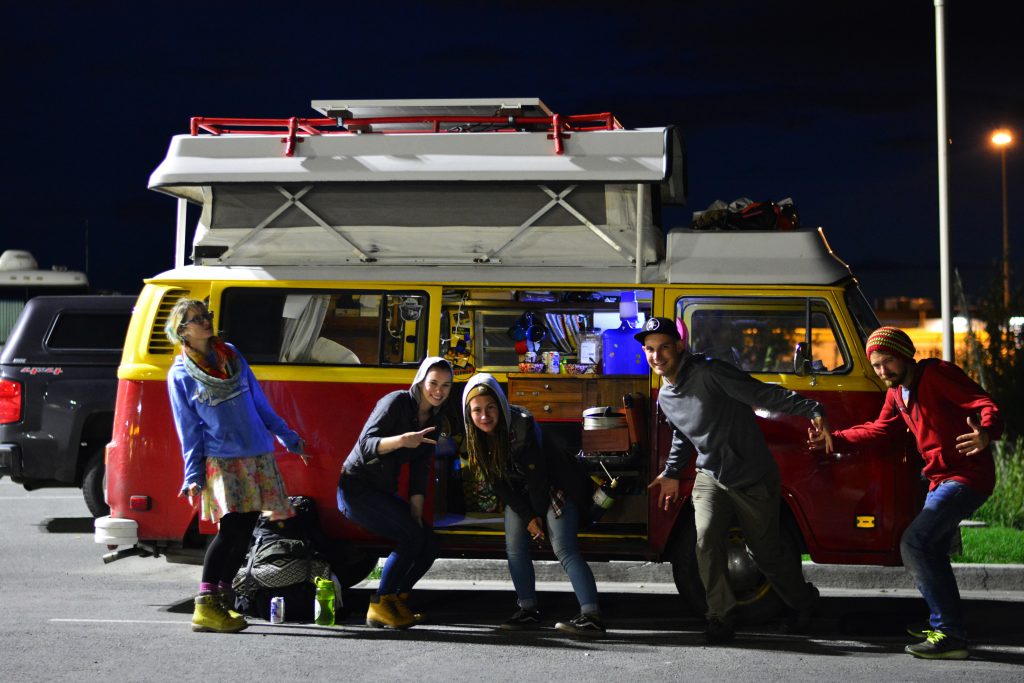
Johanna from Germany couchsurfed with us in our Bus in Anchorage, Alaska. Due to lack of free alternatives in the city, we slept in a parking lot (that specifically allowed campers and was THE spot for overlanders in Anchorage). Big props to Johanna for staying with us despite the concrete.
Google satellite images/driving around (everywhere)
Google satellite is pretty rad – and by that, I mean very, very detailed. If we aren’t sure where exactly to camp but know the general area, we’ve often pulled out Google and searched roads for pullouts or grassy areas. We found many a peaceful sleeping spot this way. Another version of this, if we are already in the area, is just to drive around and check out roads. You never know when you will find a secluded pull-out that is perfectly Big-Emma-sized.
The cover picture of this post was taken somewhere in a forest in Oregon. It was one of the best places we have found by simply driving around.
Beaches (Mexico)
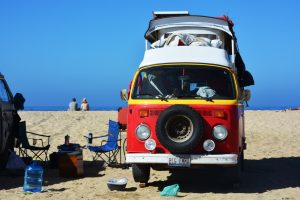
Free camping on the beach in Todos Santos. We found this spot on iOverlander.
The first few meters of beach is public land in Mexico, and you can theoretically camp there for free and no one can make you pay for it. Often, somebody has still set up a palapa or some rustic toilets, so we often end up paying anyways (usually around $2.50 USD for the two of us). However, there are many stretches that are simply a beach at the end of a lonely road – especially on Baja California. Although it is better to camp with friends, camping alone at one of these was never a problem for us on Baja.
Street camping (anywhere)
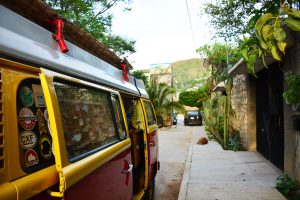
Street camping in Oaxaca City, Mexico.
These next two are our least-favorite free camping options. Street camping (aka boondocking) is when – you guessed it – we simply park on the street. We pull the curtains, leave our top down, and try not to be too conspicuous.
You can do this almost anywhere, but we personally don’t like to. In the States and in Canada, street camping always made us nervous that the cops would shoo us away. The upside is that you can do it practically anywhere; the downside is that it is often loud, not a very peaceful, and doesn’t come with a bathroom. Be sure to have that empty coffee can handy. We
tried this in
Banff in Canada, and did a lot of it with our
friends in southern California, where free camp spots are few and far between.
Walmart (USA, cities)
Infamous Walmart. They are, surprisingly, actually pretty good to the traveler community, because many Walmarts let you stay overnight in their lots for free. There are people practically living in their vehicles at the Walmart in Fairbanks, Alaska. Again, it is not the most tranquil of settings, but we always felt pretty safe and it’s another good bet in cities. Most have a 24-hour bathroom – but be sure to check their hours first before you count on that.
Some Walmarts, however, do
not allow travelers to boondock, a common practice on the West Coast. However, you can
consult this list to see if the Walmart you are considering as your backyard for the night will allow you to park there or not.
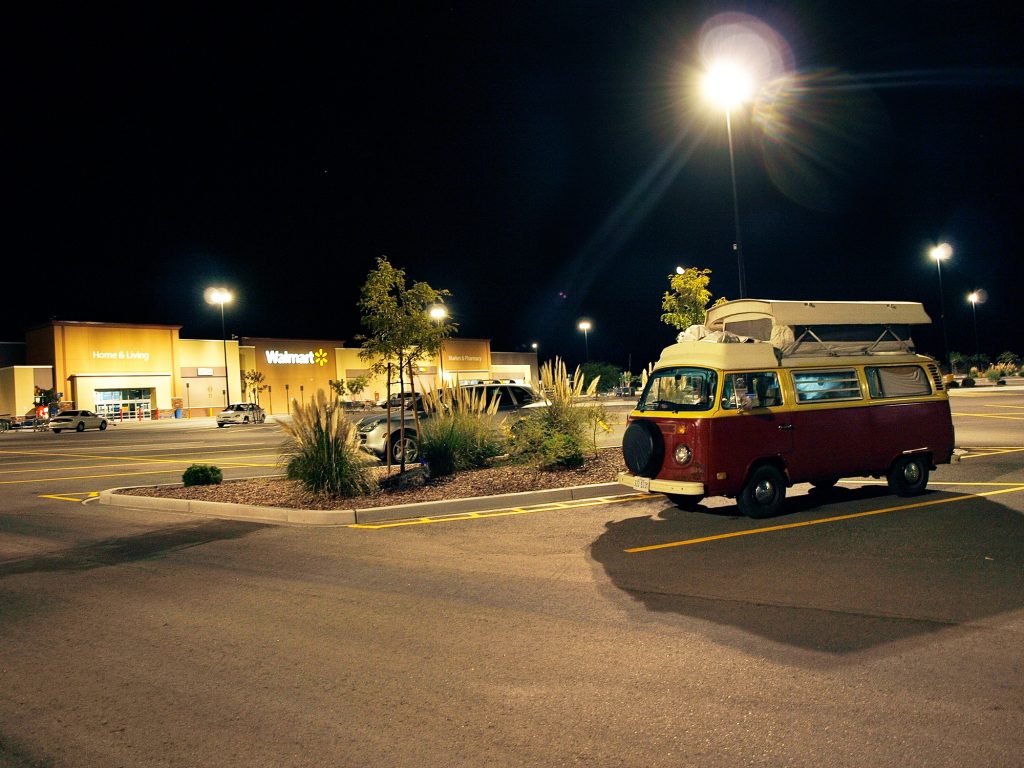
Big Emma in 2011. Photo credit: Philipp Dyllus.
No matter where you end up staying, one rule has proven to be golden: figure it out before it gets dark. If you don’t you will either be very, very tired (not to mention frustrated) when you do get there or end up staying somewhere you don’t want to be.
Oh, and don’t forget your roll of toilet paper.


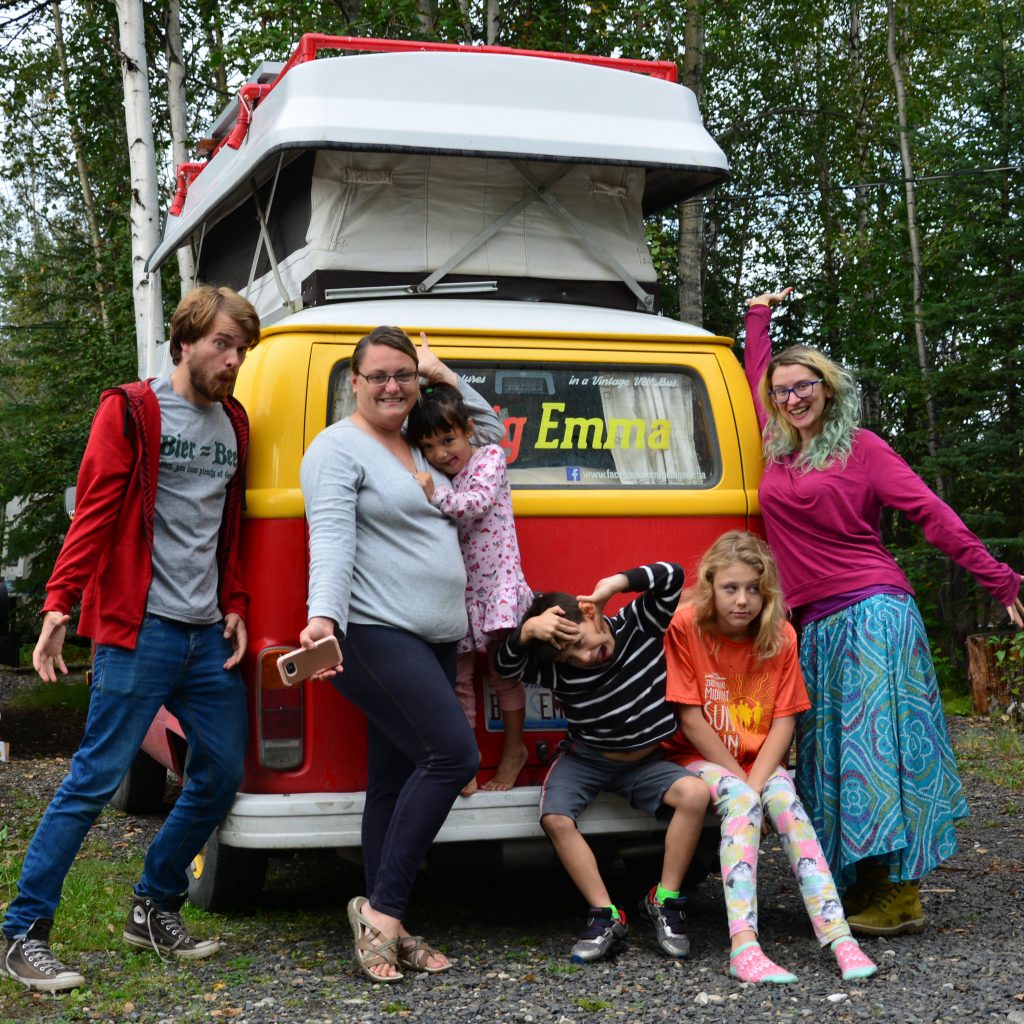






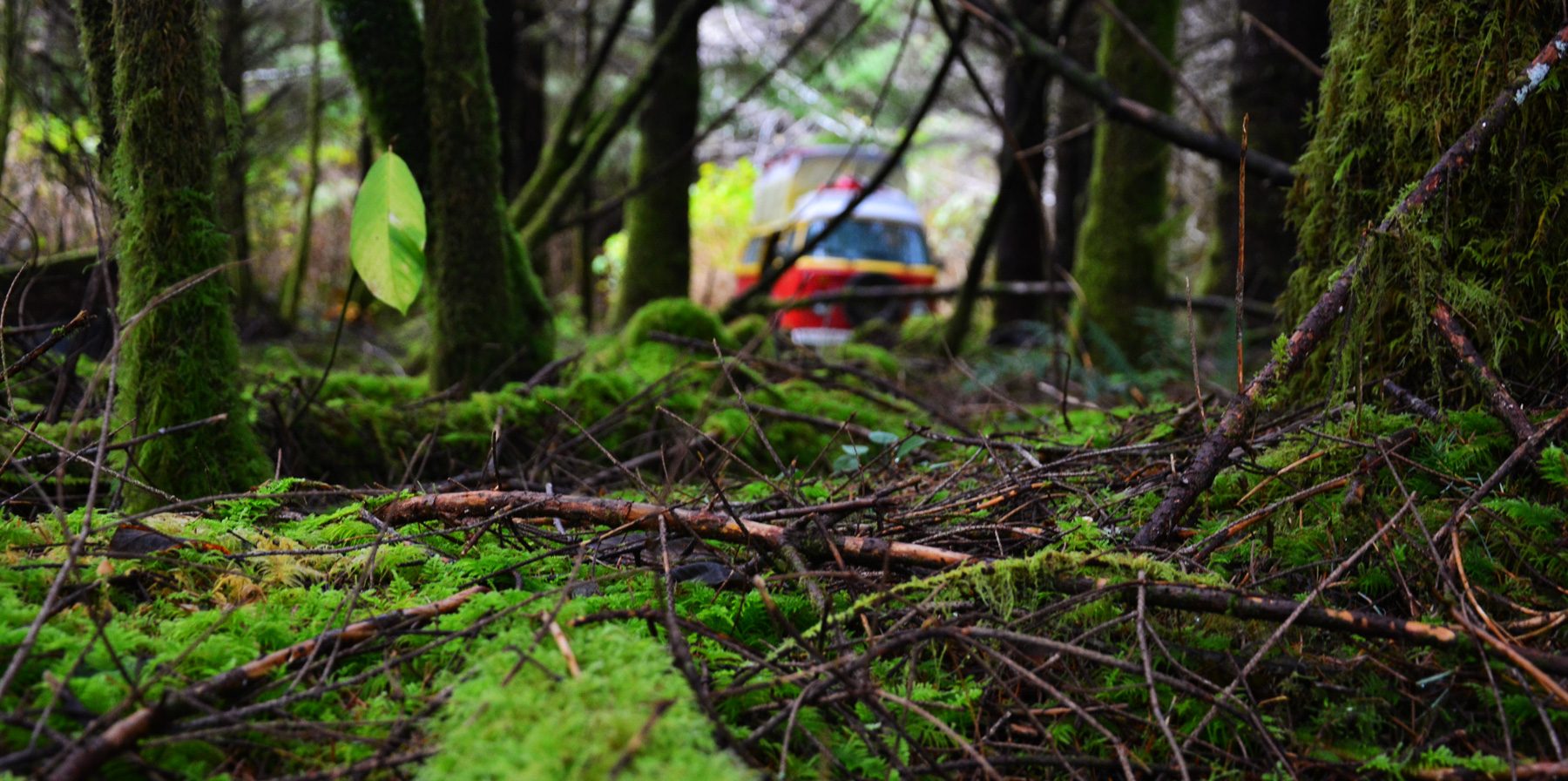
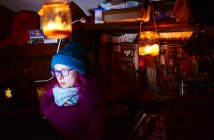
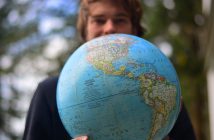
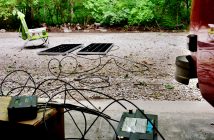
1 Comment
Next time I write a blog about a trip, I’m just going to make it a bunch of links to your blog! You cover all the topics I think about in much better detail with more photos! 😀